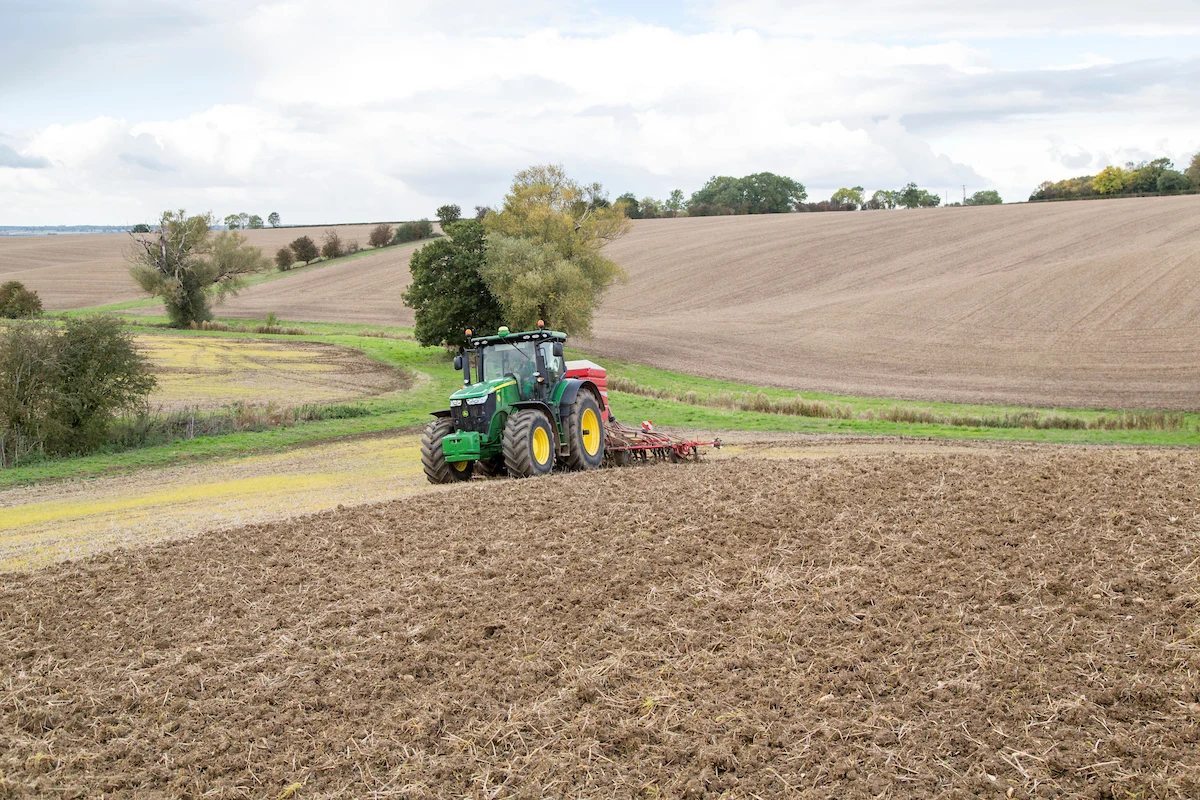
Tom Sowerby runs through some advice around six key agronomy topics
Author
Tom Sowerby | 29th August 2023Tags
Advice on six topics for northern growers this September
Harvest progressed slowly and was definitely not as straightforward as last year, but as we approached the August bank holiday with some better weather, farmers were getting there.
In terms of yield it hasn’t been a disaster, but equally no records are being broken either. On my home farm, barley wasn’t great, oilseed rape did really well while wheat was variable. I think most growers will probably be the same with a mixed bag of results.
Progress with harvest has dictated to some extent how much oilseed rape has been drilled, although there were some crops that were drilled in July, which might be a little too early. But there was lot of land work being done in August in preparation for both oilseed rape and cereals.
Tom’s agronomy tips for September
1. Is it too late for oilseed rape drilling?
With oilseed rape price half that of 12 months ago, and problems with getting it established, there seems a little less enthusiasm for the crop this autumn. I think the area will be down a little in Yorkshire, especially over in the east on the Wolds, while further north it will probably remain similar as last year.
For those still wanting to plant, it’s not too late in September, at least until you get to around the middle of the month, as long as there is still moisture around, which looks like a given this year.
Hybrid varieties, such as DK Exstar, have a bit more flexibility on drilling date and perhaps better suit later drilling than conventional open-pollinated varieties as they tend to be quicker to emerge and have better autumn vigour. With planting in September you’re looking for both those attributes to get it away from cabbage stem flea beetles and to establish a decent size of plant ahead of winter.
Using organic manures or starter fertiliser can also help give the crop an early boost.
2. What about cover crops?
Similarly to oilseed rape, most overwintered cover crops are better established in August, but it’s not necessarily too late to try in September, whether it’s a multi-species mix or stubble turnips for grazing.
As with oilseed rape, you’re hoping for a kind early autumn to help these crops put on enough biomass and especially roots to be beneficial, but the later it gets in September the fewer species will be able to achieve this, so be aware of that if and when buying multi-species mixes.
3. Manage green bridges to reduce BYDV
Barley yellow dwarf virus was more of an issue, certainly for southern and eastern growers, than for some time, possibly partly as the result of the loss of neonicotinoid seed treatment approval.
It’s prompted us to do some work looking at ideal timing of applying Roundup (glyphosate) before drilling, as there’s a risk of being too late and not destroying the green bridge from previous crop volunteers to the new emerging crop.
This research has suggested that the optimum time for applying Roundup is 10 days before drilling to prevent a green bridge for aphids. In these trials it also gave better black-grass control, but there’s not necessarily any harm in applying a second spray just before drilling or with the pre-emergence herbicide if there are signs of more grassweed emergence.
Application rates should be 540g a.i./ha for weeds that are GS11-13, while increase to 720g a.i./ha for weeds that are starting to tiller.
4. Delay wheat drilling until October?
Last year, there was more September drilled wheat than for several years, and grassweed control suffered as a result it seems, even with a new herbicide on the market.
In an ideal world that would probably suggest leaving wheat drilling until October, unless you don’t have much of a grassweed pressure. Obviously the counter is what will the weather do, and you don’t want to get into a situation where you are trying to drill into really wet conditions.
Most growers will be looking to drill winter barley in late September – a high biomass and lots of tillers are crucial for highest yields and earlier drilling will help achieve this.
5. What about herbicide options for early drilled crops?
For winter barley, we introduced Proclus (aclonifen) last year for its first season. It’s crop safety is a bit more marginal than in wheat so the rate has been reduced to 1.0 L/ha compared with 1.4 L/ha in wheat.
In both crops it should be used strictly as a pre-emergence only spray, and mixed with 0.6 L/ha of Liberator (flufenacet + diflufenican). Soil temperatures for Septemeber drilled crops will still be relatively high, so crops can come through the ground quickly so try to spray within 48 hours of drilling.
Crops also need to be drilled to 32mm to help avoid crop damage, while heavy rain immediately after application can be a problem. Try to avoid overlaps – that’s where we’ve seen most damage although it doesn’t seem to translate through to any significant yield penalty.
6. What’s the Cercospora risk in sugar beet?
Cercospora risk in beet crops has been low this year in the northern part of the sugar beet growing area, according to BBRO monitoring. A risk alert was made in early July for parts of East Anglia, but conditions have been less conducive in the north. Incidence in sugar beet regions of the disease has been low and sporadic.
If risk does increase, or you need a further application of a fungicide in September for rust, then Caligula (fluopyram + prothioconazole) is an option to consider.